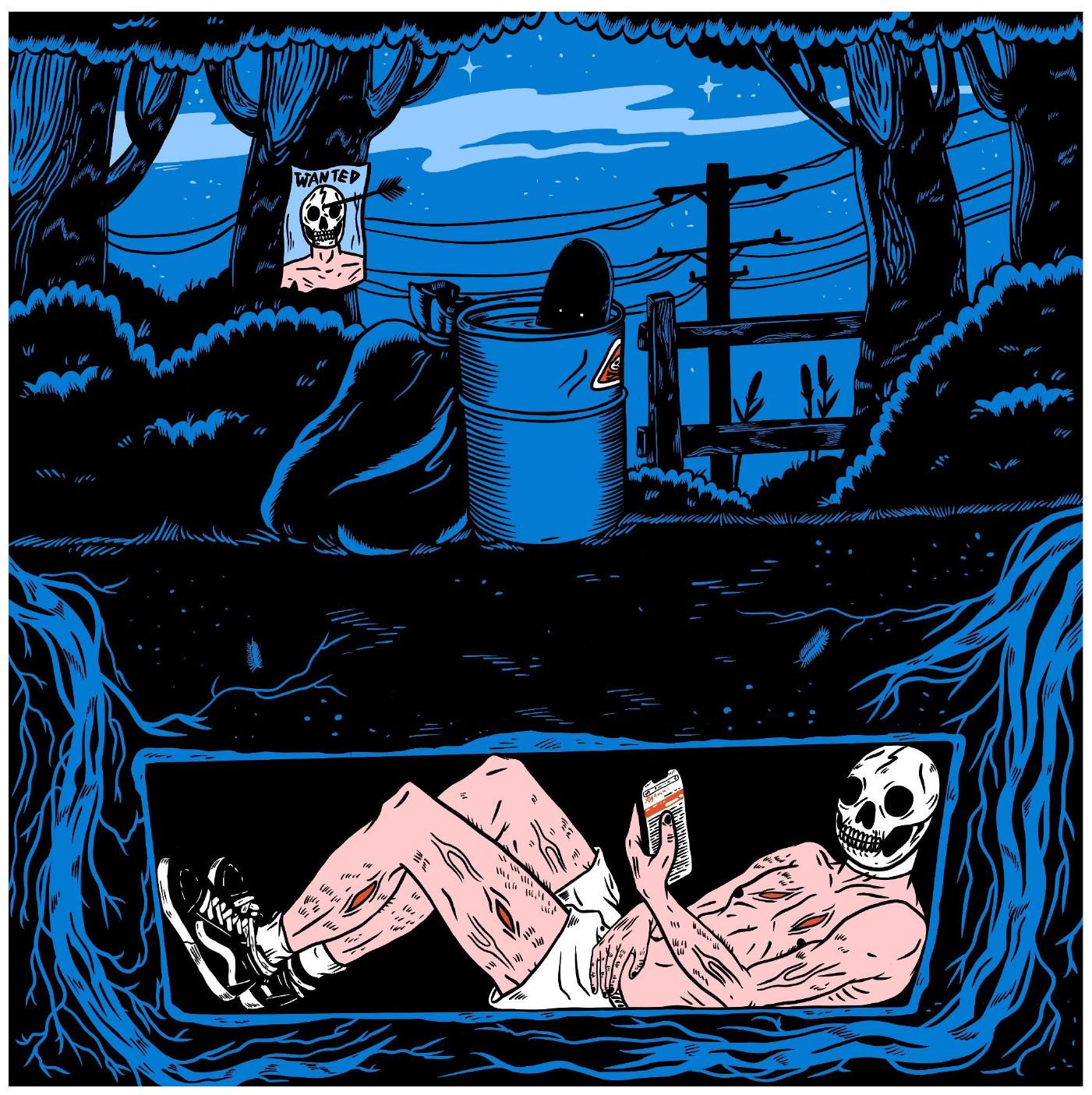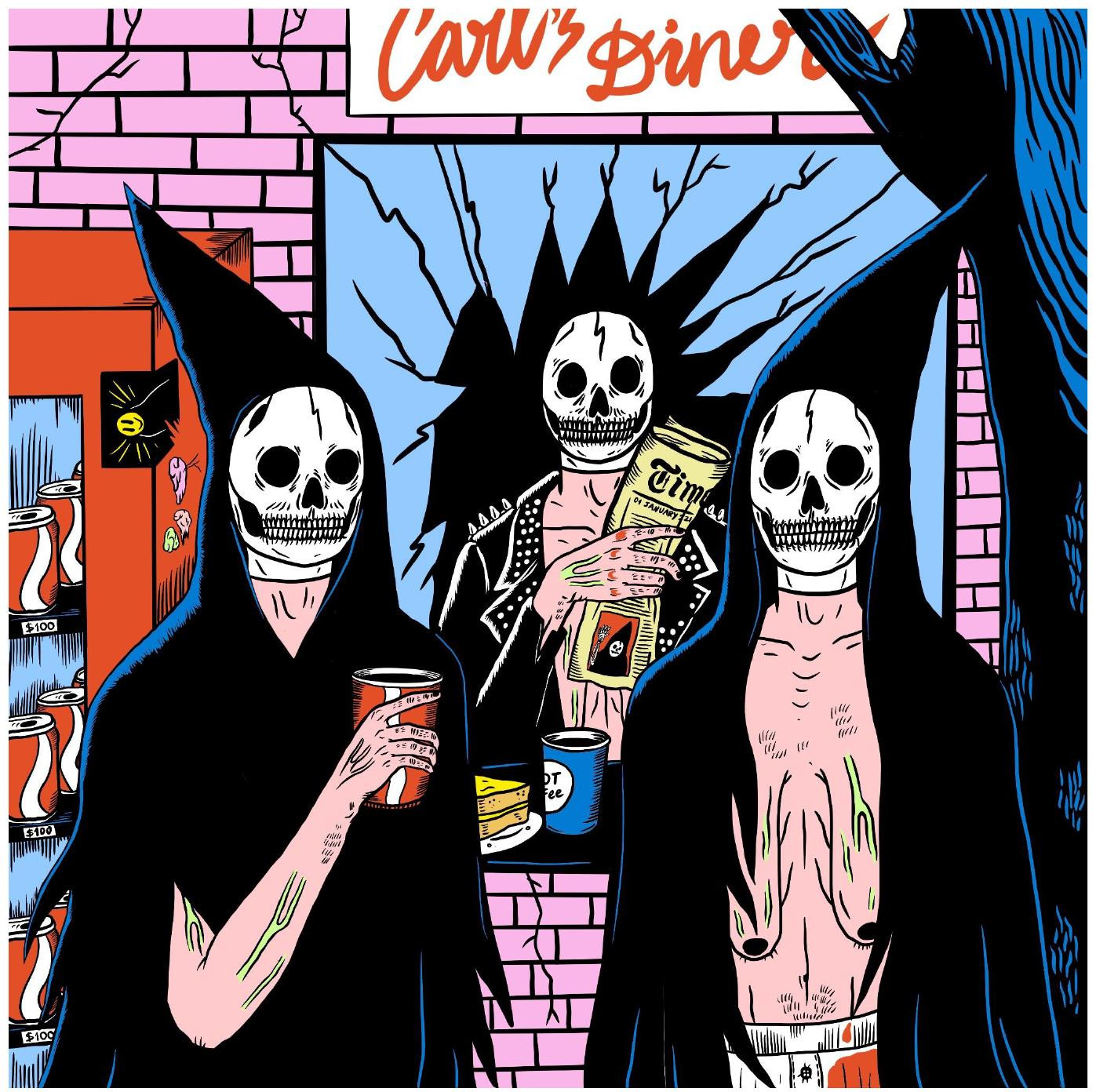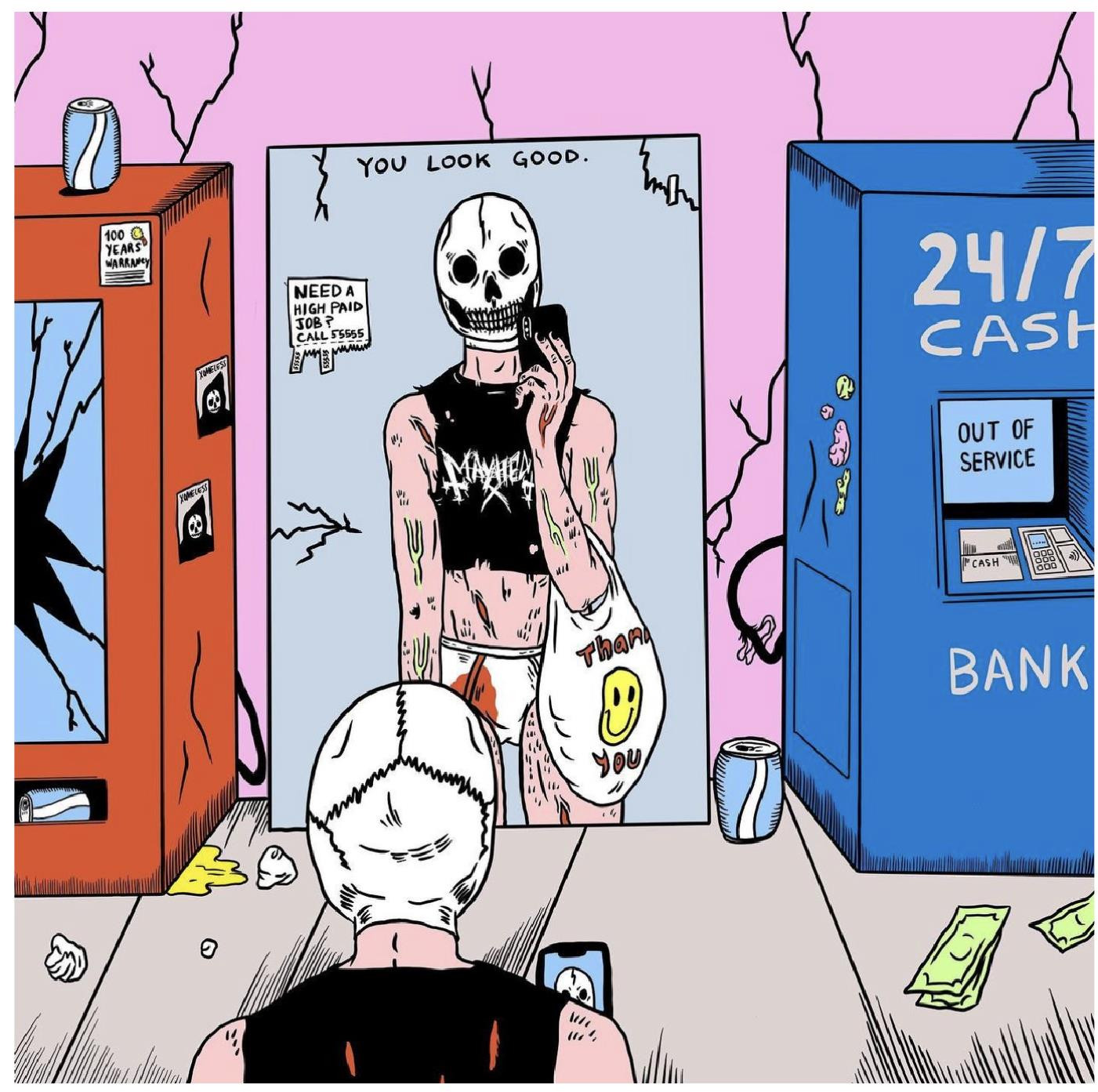Natalia Egorova / Xomeless: The Faces of Death in the Landscape of the Modern City

Contemporary artists often want to appear simpler and funnier than they really are. However, behind this friendly facade often lies an incredibly deep message and a detailed author’s philosophical concept. This is a very rare type of artist, revealing themselves in the process of getting acquainted with their art, and today I want to tell you about one of these unique artists.

Natalia Egorova’s style can be described as contrasting, rough, full of black humour, constructivist, detailed, and tending towards anti-centre-oriented compositions. Her digital canvases refer to notebook drawings, American comics from the 1970s, and the aesthetics of budget horror books. However, it would be a mistake to consider Natalia Egorova’s works as kitsch. No!

The main subject of Natalia Egorova’s artistic research is the paradox of the relationship between the mask as a body and the body as a mask. In her most outstanding works, such as "The Smell of Death," "The Silence," "Og nóg beini er kalt," and "Heading to a Party," this theme is revealed through the use of images of mutilated bodies whose faces are covered by masks. These masks can be called masks of death or masks of the dead. We cannot be 100% sure whether these characters are alive or dead. Probably, this is not even a task that stands before them. These characters are so engrossed in examining their own reflections in various mirrors, shop windows, and smartphone screens that they only reinforce this duality of perception. The only thing that can be interpreted more or less unambiguously is the objective environment in which the artist has placed these characters. Presumably, it is some large, old-fashioned Western city, full of artefacts from a "golden age" of rock and roll, parties, celebrity magazines, and lost memories. It is not surprising that the artist uses three dominant colours in each work, giving them an effect that could be boldly called dreamlike. The industrial environment in Egorova’s works serves as both a nostalgic and ominous backdrop, an arena where the tragedies of bodies and their masks take place. This is a poignant image that excites, disturbs, inspires, and sobers. Natalia Egorova’s art deconstructs pop culture and finds in it an existential constant that cannot be reduced only to a scream, horror, madness, or agony. She deprives the artistic image of death of affectivity and excessive theatricality; death becomes a symbol with a million connotations. Death can be pitiful, routine, and meaningless. Life can be the same way. The artist offers us not so many pictures for contemplation but a political will to draw boundaries and set equal signs where we would never dare to do so. Egorova modernises and reinvents contemporary visual art, making it bolder, more uncompromising, more humane, and more professional.

I highly recommend that you follow the creative path of this unusual artist; it will enrich your collection of unique impressions and expand your aesthetic background.
Jenya Stashkov, Sheffield-based art critic and artist
